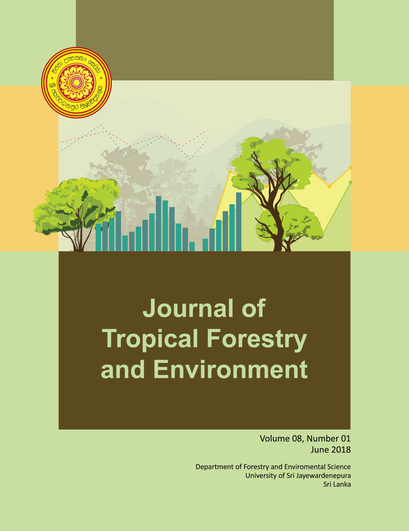Coastal Fringe Habitat Monitoring using Kite Aerial Photography: A Remote Sensing-based Case Study
DOI:
https://doi.org/10.31357/jtfe.v8i1.3480Abstract
Monitoring coastal ecosystem resilience for climatic and/or anthropogenic vulnerabilities is challenging with moderately resolution Landsat images. A simple, low-cost Kite Aerial Photograph platform (KAP) was vital to obtain high-resolution images for a small area to develop coastal GIS models. This study examines post-tsunami relief in two coastal shrub ecosystem and a mangrove ecosystem in terms of vegetation bioshield mass and sea level rise perspectives. A KAP platform was created using two light-weight automatic cameras with dual bandpass Red-NIR filters, a Picavet stabilizing rig, a GPS tracker and a Parafoil Kite. The KAP images were processed to build mosaic images, orthorectified and geo-referenced Digital Elevation Model (DEM) using structure-from motion (SFM) and remote sensing software (Agisoft PhotoScan and ENVI respectively). KAP has been utilised for coastal mapping under three scenarios: (i) object-orient feature extraction for discriminate Prosopis juliflora, an invasive alien species, and texture analysis for coastal shrub and herbaceous vegetation classification (ii) DEM for sea level rise, and (iii) Normalized Difference Vegetation Index (NDVI) for mangrove bioshield mass estimation. The image processing produced a point cloud with an average density of 35 points/m2; a DEM with 17 cm resolution; and an orthophoto mosaic with an average resolution of 4.0 cm. The results showed that object orient feature extraction can discriminate Prosopis juliflora from the coastal shrubs with 62% accuracy, while supervised classification accuracy was 51%. Mangrove vegetation in Rekawa was discriminated from grassland and other coastal shrub vegetation types at ≥4 NDVI threshold resulted in 0.33 ha of mangroves (28% of 1.15 ha of the total area). The Kahandamodara beach coastal vegetation was dominant by Ipomoea pes-capre with 26% coverage. In conclusion, KAP has a wide potential to bridge science with high spatial/temporal resolution in-situ data for coastal habitat mapping, where the researchers can utilize the data within a low-cost budget.
Keywords: kite mapping, coast, DEM, mangrove, NDVI
Downloads
Published
How to Cite
Issue
Section
License
The publisher retain the copyrights of contents published, and all open access articles are distributed under the terms of the Creative Commons Attribution-Noncommercial-No Derivative Works 3.0 Unported License[U1], which permits unrestricted use, distribution and reproduction in any medium, provided that the original work is properly cited.
You can download the Legal Code for this License at: http://creativecommons.org/licenses/by-nc-nd/3.0/legalcode


